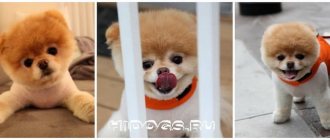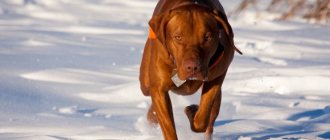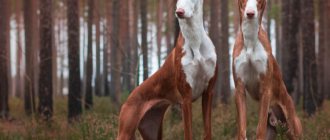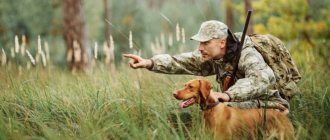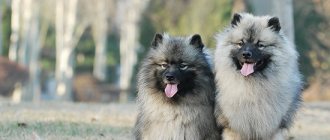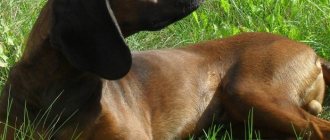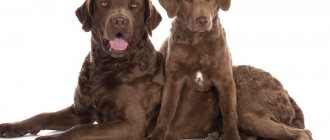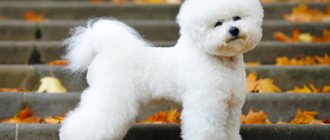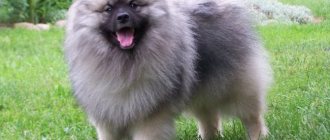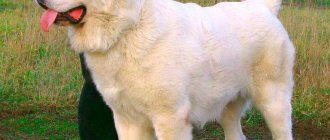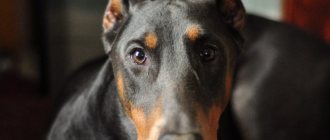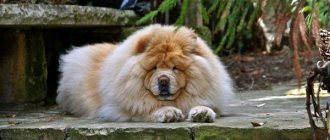Answers to the question Tibetan dog 4 letters
- Apso – Tibetan dog 4 letters
- Solve crosswords
- Apso – Tibetan dog breed 4 letters
- Lama – Translate into Tibetan the words: “There is no higher” 4 letters
- Lama – Tibetan monk, teacher-mentor 4 letters
- Mabu - Keith. (Tibetan) wind reed. music tool 4 letters
- Mabu – Chinese (Tibetan) wind reed musical instrument 4 letters
- Amdo - The old name for the vast treeless areas between the floodplains of the Yangtze and Yellow River, stretching in the northeast of the Tibetan Plateau to the very limits of Inner China and recognizing the authority of the Dalai Lama 4 letters
- Amdo - Name of the northeastern part of the Tibetan Plateau in China 4 letters
- Lama – There are 4 letters in Tibetan Buddhism
- Ganges - River born in the Tibetan Plateau 4 letters
- Lama – Tibetan monk or Andean camel 4 letters
- Lama – Monk of Tibetan monasteries 4 letters
- Lama – Tibetan monk 4 letters
- Kata – Tibetan scarf 4 letters
- Chiru – Tibetan antelope 4 letters
- Apso – Tibetan dog 4 letters
- Lang – City in China, Tibet Autonomous Region 4 letters
- Amdo - Name northeastern part of the Tibetan Plateau in China 4 letters
- Apso – Tibetan dog 4 letters
- Aidi – (Atlas Shepherd) herding dog; dog breed 4 letters
- Aidi – Breed of hunting dogs, Moroccan dog 4 letters
- Biyi - Hunting dog; dog breed 4 letters
- Gacha - (gachi) the back side of the croup and hind legs of an animal or dog from the sacrum and below; hunting name for the back of the thighs of dogs, wolves and foxes 4 letters
- Tara – What was the name of the cat who received the Blue Tiger Award and Hero Dog Awards for saving a child from a dog attack 4 letters
- Musher - Driver of dogs or reindeer harnessed to sledges 4 letters
- Pug – A small indoor dog similar to a bulldog 4 letters
- Bitch – Female domestic dog 4 letters
- Spitz – Indoor dog with fluffy fur 4 letters
- Kusi – Command to a dog 4 letters
- Tubo – Dog command 4 letters
Choosing a puppy, price range
As we have already noted, the Tibetan Mastiff dog breed is rare, not very common in purebred form, but has many fakes in the form of crossbreeds. To avoid deception and not get an angry and huge dog, contact only nurseries and breeders with permission from the RKF to breed mastiffs.
The choice of a puppy itself is not difficult and is not much different from choosing puppies among other breeds. Availability of all documents, comfortable living conditions, healthy bitch, provision of all documents for puppies and subsequent patronage - these are the key conditions for choosing a puppy from a particular breeder. The puppies themselves are large, should have a healthy appearance and dense, soft fur without bald spots. Must show affection and lack of aggression.
Prices for pet-class puppies start at 50,000 rubles; for a show class, expect 60,000-150,000 rubles, and the price of a breeding class can reach 400,000 rubles.
IMPORTANT: require breeders to provide documents for mating; the admixture of foreign breeds can result in the dog’s uncontrollable aggression.
Sacred dogs - genetic treasures of Tibet
Tibet is a sacred and little-known country. A harsh land of snow-capped peaks, desert plateaus and crystal clear cold lakes. It is a stronghold of Mahayana Buddhism, and in 1912-1951 it was an independent state. Now politically Tibet belongs to China, but... Everything is not easy there. Buddhist influence left a certain mystical imprint on local dog breeds and on attitudes towards them. Today you will learn about small sacred rocks, companions of monks and lamas.
Little lion cubs - Lhasa Apso.
All European breeds are mostly several hundred years old. The dogs of Tibet carry such ancient genes that they can be compared with the genetic treasure of the planet. The ancestry of these dogs goes back to the first domesticated wolves in the territories of China and Tibet.
All indigenous mammals of Tibet have common features of adaptation to a cold and harsh climate. This also applies to dogs. All of them are large-headed, large-eyed, with wide-spaced and straight-set eyes. Also present: short neck, thick scruff, abnormally wide chest, powerful bones, shortened limbs. These anatomical features indicate adaptation to the highland climate.
This very serious Tibetan spaniel knows about his wolf genes.
History of the Lhasa Apso breed
Thousands of years ago, the ancestors of modern Lhasa Apsos appeared in distant Tibet. The breed was developed by Tibetan monks , who believed that the small apso was a talisman warning owners of impending danger. They lived in temples, where only sacred animals . Tibetans believed that dogs were sometimes possessed by the souls of dead people.
Puppies of this dog breed were not previously sold; they could only be received as a gift from Tibetan monks, as a sign of extreme respect and good attitude towards humans.
The breed first crossed the borders of European countries at the end of the 19th century. Opinions differ about who first brought Lhasa to Europe. According to one version, the dog came to the British Isles thanks to the Baileys.
The first description was made by Lionel Jacobs in 1901. And the Lhasa Apso came to an exhibition in London in 1929
Only a few representatives of the breed came to Russia at the beginning of the 20th century, but almost no breeding was done.
Note that the standard of the Lhasa Apso has remained virtually unchanged throughout the entire existence of the breed, which is more than one thousand years, since the first mentions of these dogs date back to the 1st-2nd centuries BC. e .
Shih Tzu character
A description of the breed’s habits, excluding touching epithets, may take several pages, but future owners need to know about the main features:
- Unlike many decorative dogs, Shih Tzus do not bark over trifles, raising their voice only in the event of a direct threat to themselves or their owner. Aggression is not their thing at all; truly royal habits are rooted in noble Asian genetics.
- They love to walk, but if for some reason going outside lasts less than an hour, the dog will not be upset. The same applies to patience - a four-legged friend who is toilet trained will politely wait for the owner to wake up in the morning.
- The Tibetan “beast” adores children, as well as the rest of the family. If a child appears in the house much later, the adult dog immediately perceives the baby as his own, stands “on duty” near the crib and tolerates all sorts of manifestations of love.
- Excessive sociability often backfires on your pet. They are easily interested in a treat even from a stranger, which is why Shih Tzus regularly top the “lost” ratings around the world.
- Despite all the positivity and extroverted nature, the breed should never be spoiled. Don't let the owner be confused by its small size - the shaggy whirlwind is capable of turning over furniture and climbing into the far corners of cabinets right up to the ceiling.
- Loneliness is a pet's main enemy. He becomes so attached to a person that even when staying late at work, the owner runs the risk of being greeted with a joyful howl that will be heard for several neighboring apartments above and below.
General information
History of the species
It was not prohibited to export Tibetan Mastiff dogs from the Celestial Empire, however, there were not a large number of people who wanted to get involved with the huge and ferocious dog. Brave Roman military leaders, rare travelers and overseas ambassadors - each at one time brought dogs from the breed to Europe. There, the shaggy giants interbred, gave birth to offspring, formed the basis for new breeds, but did not have an independent flock. Even today it cannot be said that the breed is very popular in the world; rather, it is an exception that someone has a mastiff of Tibetan origin on their farm. The breed is still widespread only in the Himalayas, where, like hundreds of years ago, they graze herds and protect their possessions.
INTERESTING: the ancient inhabitants of China believed that the marks above the eyes of mastiffs were their second eyes, and it was thanks to them that they were so sensitive and all-seeing, capable of spotting the beast and saving livestock from theft.
Exterior
The great-grandfather of most large breeds, the Tibetan Mastiff is a very large breed. Height at the withers reaches 65-70 cm, weight ranges from 60-80 kg. Despite the fact that large breeds have relatively short lives, this is not the case with the ancient mastiff. The average lifespan of the breed is 10-14 years, and not 8-10 like, for example, the Neapolitan Mastino, a descendant of the great breed.
Even a mastiff puppy already reveals all the greatness of the future dog. Large and incredibly fluffy, with a strong body and paws - from puppyhood the dog exudes strength.
According to the ICF classification, the breed is classified as a herding dog, with mountain working conditions, without working tests. Externally, the dog looks heavy, well built, strong in both body and limbs. Subcutaneous fat is not provided in large quantities; the heat-preserving function is performed by thick fur.
The length of the muzzle is proportional to the stop, the length of the body exceeds the height at the withers, but maintaining the natural grace of the animal. The head is large, proportional, heavy, with a rounded skull. The nose of the breed is wide, with open nostrils, black in color, or brown in cases of light colors. The bite is classic, scissor-shaped, covered with fleshy lips. The eyes are oval, black, but, like the nose, brown is allowed, in accordance with the type of color.
The breed's tail is long, when running it is kept parallel to the ground, and when excited it can be thrown over its back. The movements of mastiffs are light, with good propulsion from the hind limbs. The breed was raised in mountainous conditions, so it must maintain graceful movements and stability in any terrain.
The entire body of Tibetan Mastiff dogs is covered with thick hair, with a dense undercoat. The hairs themselves are thin, in the summer they become thinner, soft and straight to the touch. On the neck and shoulders the hair is maximally long, forming a mane.
The color of mastiffs has the following assumptions:
- Black,
- Black and tan
- Blue with or without tan,
- Golden with gradation from fawn to deep red,
- Sable.
When assessing color, it is important that the colors are as pure as possible; the tan color should be in harmony with the main color of the coat. A white spot on the chest of a mastiff is allowed, but on the paws white is not desirable, although it is allowed in very small quantities. Historical tan and markings on the face are also allowed by experts for modern representatives of the breed, and it is even allowed to have tan markings in the form of glasses.
Breed character and key habits
The character of Tibetan Mastiff dogs corresponds to their intended purpose - ferocious towards strangers, but devoted to their family and home. The breed was bred as an independent guard of the herd, so the sense of independence and independence is developed like no other breed. An important aspect for such a huge dog is that he is not prone to causeless aggression and will not bark or attack without reason. In private households, he becomes an ideal security guard. Especially if you have completed an additional training course at a dog training school. Only with its impressive appearance can a mastiff scare away uninvited guests, and if the dog really believes that its territory is being encroached on without the owner’s knowledge, it will be difficult to stop the mastiff.
The peculiarity of the mastiff is that, although it is a dog, it has the genetic ability to be nocturnal. During the day, your pet will prefer to nap in the garden, but at night it will patrol the territory of the site, or choose a couple of places to observe the farm.
Once a mastiff appears, you should approach the issue of guests in your home very carefully. The breed is wary of strangers; it is impossible to accustom a dog to all relatives and friends, so it is not recommended to leave guests without the owner in sight of the animal. This factor needs to be especially clearly controlled if you have children whose peers come to their house to play. The mastiff perceives a child as part of a sponsored flock. The dog does not evaluate children's games from the point of view of fun; he sees them as a threat to the child. Therefore, before guests arrive, it is advisable to close the Tibetan mastiff in an enclosure.
The mastiff gets along well with other animals if it appeared later than everyone else. The dog will be wary of new animals, and in cases of suspicious behavior it may harass a new member of the yard.
The dog will treat the family where the mastiff grew up more than tenderly. The owner must be prepared for the fact that a fairly tame mastiff will want to contact him almost at the level of a Pomeranian Spitz. Placing its muzzle on its knees, rubbing against its legs, snuggling and walking with its tail - all this is found among furry giants and is not uncommon.
Socializing a puppy is the key to a peaceful life with an adult dog, but remember, even when your mastiff puppy grows up, he will not get rid of one of his habits - digging and chewing everything. If you let your dog into the house, then from puppyhood develop in him restraint in his desires to play with toys other than his own.
The mastiff loves to walk, he will not jump like a bunny, but rhythmic walks are necessary even for a dog living freely in the yard. Basic commands are learned relatively well, but it is important that the puppy recognizes the authority of the owner. You can train from a puppy to a year and a half in a continuous course. The breed is not recommended as a first dog, and an experienced dog breeder, as a rule, does not have problems with training.
See the full list of 581 dog breeds
A
- Australian Greyhound or Kangaroo Dog
- Australian Shepherd
- Australian Bandog
- Australian Bulldog
- Australian dingo
- Australian Kelpie
- Australian Terrier
- Australian Heeler or Australian Cattle Dog
- Australian Silky Terrier or Silky Terrier
- Austrian Hound
- Austrian Shorthaired Pinscher
- Azawakh (Blue Berber Greyhound)
- Aidi (Atlas Shepherd)
- Ainu (Hokaido)
- Akbash, or Akbash-dog, or Turkish Akbash
- Akita, or Japanese Akita Inu (see reviews and characteristics)
- Akita Shepherd
- Alano (Spanish Bulldog)
- Alapaha purebred bulldog, or alpaha
- Alpine dachshund hound
- Alaskan Klee Kai, or mini husky
- Alaskan Malamute
- Alaskan Husky
- American Blue Gascony Hound, or Big 'n' Blue
- American Indian dog
- American Deer Dog or American Staghound
- American Eagle Dog
- American Black and Tan Coon Hound
- American Bandogi Mastiff
- American Bulldog
- American Bullmolossus
- American Bulles
- American Water Spaniel
- American Hairless Terrier (abbr.: AGT)
- American Cocker Spaniel
- American lo shi pug
- American Mastiff
- American Mastiff Panya
- American Pit Bull Terrier, or Pitbull (AMBT)
- American Staghound or American Deer Dog
- American Staffordshire Terrier, or Stafford
- American Toy or Small Terrier
- American Foxhound
- American Eskimo Spitz
- Anatolian Karabash, or Anatolian Cattle Dog
- English coonhound, or red-mottled coonhound
- English Shepherd
- English bulldog
- English cocker spaniel
- English Mastiff
- English pointer
- English Setter
- English Springer Spaniel
- English toy terrier
- English Foxhound or English Foxhound
- Anglo Russian hound
- Andalusian Podenco, or Andalusian Podenco
- Appenzeller
- Arabian Greyhound, or Slugi
- Dogo Argentino or Mastiff
- Bouvier des Ardennes
- Armant
- Artesian-Norman Basset
- Artois hound
- Ariège Hound
- Ariège braque
- Afador
- Afghan Collie
- Afghan Retriever
- Afghan Spaniel
- Afghan Hound (Afghan)
- Afghan Shepherd
- Afghan Mastiff Mazari, or Aryan Molosser
- Afolli
- Affen griffon
- Affen Spaniel
- Affen Terrier
- Affen Tzu
- Affenpinscher
- Affenpu | See descriptions and photos of breeds starting with the letter A
B
- Bavarian mountain hound
- Bak Shepherd Dog (Euskal Artzain Txakurra)
- Bakhmul
- Balkan hound
- Barbette
- Basenji
- Basset hound (basset)
- Bedlington Terrier
- White Swiss Shepherd (BSHO, American-Canadian White Shepherd)
- Belgian Shepherd: Tervuren. Groenendael. Malinois. Laekenois
- Belgian Griffon
- Belgian Shorthaired Pointer
- Belgian Mastiff
- Bergamasco Shepherd
- Bernese Hound
- Bernese Mountain Dog
- Biewer Yorkshire Terrier
- Beagle
- Beagle Harrier
- Biyi
- Biro Yorkshire Terrier
- Bichon (Bichon Frize)
- Bichon York
- Bloodhound
- Blue Lacy
- Bobtail
- Boykin Spaniel
- Boxer
- Bulgarian hound
- Bolognese
- Maltese dog
- Large Anglo-French tricolor hound
- Large Anglo-French white and black hound
- Greater Gascony Saintonge Hound
- Great Blue Gascony Hound
- Great Tree Hound
- Great Spanish Hound (Sabueso)
- Great Pyrenees Mountain Dog
- Greater Swiss Mountain Dog
- Great Vendean Griffon
- Great Munsterlander
- Large German Spitz
- Greater Portuguese Podengo
- Large Poodle (Standard, Royal Poodle)
- Big French marriage
- Border Collie
- Border Terrier
- Blue Berber Greyhound
- Dogue de Bordeaux (Dogue de Bordeaux)
- Bearded Collie (Birded Collie)
- Beauceron (French Shepherd)
- Bosnian rough-haired hound
- Boston Terrier
- Dupuy's marriage
- Breton epañol
- Briard
- Brindis fighting dog
- Broholmer
- Brussels Griffon
- Bullboxer
- Bullmastiff
- Bull Terrier (bull)
- Bourbon marriage
- Burgos pointer
- Boerboel | See descriptions and photos of all breeds starting with the letter B
IN
- valley bulldog
- Weimaraner (Weimar Pointer)
- Welsh Terrier (Welsh Terrier)
- Welsh Corgi Cardigan (Corgi Cardigan)
- Pembroke Welsh Corgi (Pembroke Corgi)
- Welsh Springer Spaniel
- Welsh Hound (Welsh Foxhound, Welsh Hound)
- Welsh Foxhound
- Hungarian Greyhound
- Hungarian Shepherd
- Hungarian Kuvasz
- Westphalian dachshund hound
- West Highland Terrier (West Highland White Terrier)
- Victorian bulldog
- Wolf Spitz
- East Siberian Laika
- East European Shepherd
- Vizsla (Hungarian pointing dog)
G
- Hawaiian poi dog
- Havanese
- HamiltonSteware
- Gampr (Armenian wolfhound)
- Hanoverian Hound on a blood trail
- Herta Pointer
- Himalayan Shepherd
- Flat coated retriever
- Grosser
- Golden Retriever
- Hairless Inca dog
- Dutch Shepherd (Herder)
- Dutch Smoushond (Smoushond)
- Dutch Water Spaniel
- Dutch Pinscher (Smoushond)
- Dutch Spaniel (Kooikerhondje)
- Dutch Tulphond
- Blue Gascony Basset
- Blue Auvergne marriage
- Blue Picardy Epagnole
- Hairless dogs (Chinese Crested, Mexican, Peruvian)
- Hamilton's Hound
- Stephen's Hound
- Plott's Hound
- Schiller Hound
- Mountain hound
- Bali mountain dog
- Mountain dog Estrela
- Greyhound
- Greenlandshund
- Greek (Hellenic) hare hound
- Greek Shepherd
- Griffon Boulet
- Griffon Korthals
- Gul-dong
- Groenendael (Belgian Shepherd)
D
- Dalmatian
- Danish dachshund hound
- Danish farm dog
- Danish broholmer
- Dandie Dinmont Terrier
- Jack Russell Terrier
- Dingo
- Deerhound
- Doberman
- Dorky
- Drever
- Wood coonhound
- Woody Tennessee Tiger Dog
- Drentic partridge dog
- Dunker
E
- Egyptian Shepherd
- Eurasian Spitz
- Eurohound
- Coonhound
AND
- Yellow and black masked southern hound
Z
- West Siberian Laika
- Golden retriever
AND
- Ivica Greyhound
- Irish Water Spaniel
- Irish Wolfhound
- Irish Glen of Imaal Terrier
- Irish Soft Coated Wheaten Terrier
- Irish Setter (red)
- Irish Terrier
- Icelandic Spitz
- Spanish water dog
- Spanish Bracque
- Spanish galgo
- Spanish Mastiff
- Istrian Wirehaired Hound
- Istrian shorthaired hound
- Italian lap dog
- Italian Greyhound
- Italian water dog
- Italian hound
- Italian marriage
- Italian Pointer
- Italian spinone
- Italian Spitz
Y
- Yorkshire Terrier
TO
- Cavalier King Charles Spaniel
- Caucasian Shepherd Dog
- Ca de bou
- Kai
- Kai Leo
- Kamchatka sled husky
- Canary dog
- Kangal
- Kan guicho (cuiscuelo)
- Can de Palleiro
- Can di castro laboreiro
- Cane Corso
- Karakachan dog, or Bulgarian shepherd dog
- Karelo Finnish Husky
- Karelian Bear Dog
- Miniature Pinscher
- Carolina dog
- Catalan Shepherd
- Castro-Laboreira dog
- Keeshond (Wolfspitz)
- Kangaroo dog
- Cairn Terrier
- Kerry Beagle
- Kerry Blue Terrier
- King Charles Spaniel
- Chinese Crested Dog
- Clumber, or Clumber Spaniel
- Kooikerhondje
- Cocker poodle or cockapoo (see description and reviews)
- Collie
- Komondor
- Korean Jindo dog
- Coton de Tulear
- Krai Sheepdog
- Mottled Blue Coonhound
- Red spotted coonhound
- Red Coonhound
- Kromforlander
- Xoloitzcuintle
- Kuvasz
- Walker Coonhound
- Kunming Shepherd
- Curly coated retriever
- Kyushu (kisu)
L
- Labrador Retriever
- Labradoodle
- Labropoodle
- Laekenois (a type of Belgian Shepherd dog)
- Languedoc Cattle Dog
- Landseer
- Lancashire Heeler
- Lapinporoir
- Latvian hound
- Levesque
- Italian Greyhound
- Levchen
- Lakeland Terrier
- Leonberger
- Leopard hound
- Catahoula Leopard Dog (Catahoula)
- Lercher
- Lithuanian hound
- Longdog
- Lucas Terrier
- Lion dog
- Lhasa apso
M
- Madagascar Bichon
- Majorero Canario
- Small English French Hound
- Lesser Apennine Hound
- Malinois (Belgian Shepherd)
- Petit Brabançon
- Lesser Vendean Basset Griffon
- Small Munsterlander
- Small French marriage
- Mallorcan Shepherd Dog or Major Cattle Dog (Ca de bestiar)
- Maltese (Maltese)
- Maltipoo
- Manchester Terrier
- Maremma
- Mastino, or Mastino Napoletano
- Mastiff
- Tahltan bear dog
- Mexican hairless dog
- Melitio kinidio
- Miniature Australian Shepherd
- Miniature American Eskimo Spitz
- Miniature Pinscher
- Miniature Schnauzer, or Mittel
- Mongolian Shepherd
- Pug
- Moscow watchdog
- Moody
- Mukuchies
- Soft Coated Wheaten Terrier
N
- Small mastiff
- German boxer
- German hound
- German Shepherd
- German quail dog
- German Wachtelhund
- German dog
- German Drahthaar (German Wirehaired Pointer)
- German dwarf spitz
- German Shorthaired Pointer
- German Langhaar (German Longhaired Pointer)
- German pinscher
- German Spaniel
- German Spitz
- German Jagdterrier
- Nenets reindeer laika
- Nivernine Griffon
- New Guinea singing dog
- New Zealand Sheepdog
- Nova Scotia Retriever
- Norrbotten Husky (Norrbotten Spitz, Norrbottenspets, Norrbottenspetz)
- Norwegian hound
- Norwegian Husky (Norsk Buhund)
- Norwegian Lundehund (Norwegian Puffin Husky)
- Norwegian Gray Elkhound (Norwegian Elkhound)
- Norwegian Black Elkhound (Norwegian Black Elkhound)
- Norwich Terrier
- Norfolk Terrier
- Newfoundland
ABOUT
- Oblavnaya Brazilian hound
- Auvergne braque (Blue Auvergne braque)
- Sheepdog Gaucho
- Shepherd panda
- Odis
- Oyrazier (Eurasier, German Eurasier)
- Reindeer Spitz (Nenets Laika)
- Ossetian Mastiff
- Otterhound (Otter Hound, Otter Dog)
P
- Fawn British Basset Griffon
- Papillon (papillon)
- Parson Russell Terrier
- Patterdale Terrier
- Pekingese
- Perro de Presa Canario
- Perro ratero Mallorquin
- Peruvian hairless dog
- Peruvian Inca Orchid
- Picardy Shepherd
- Picardy epagnole
- Pyrenean mountain dog
- Pyrenean Shepherd
- Pyrenean Mastiff
- Pitbull
- Plotthound
- Polish hound
- Polish Lowland Sheepdog
- Polish Podgalian Shepherd Dog (Polish Mountain Dog, Tatra Sheepdog)
- Pointer
- Polish ogar (Polish hound)
- Pomeranian Spitz
- Podenco Ibicenco (Xarnelo, Ibiza Greyhound)
- Podenco Andalusian
- Podenco Canario
- Portuguese Water Dog (can di agua)
- Portuguese Rabbit Dog (Lesser Portuguese Podengo)
- Portuguese Shepherd (Serra de Aires)
- Portuguese Cattle Dog
- Portuguese Podengo
- Portuguese Watch (Rafeiro do Alentejo)
- Portuguese marriage
- Posava Hound
- Prague rat
- Flat-Coated Retriever
- Petit Brabançon (Petit Brabançon, Brabant Griffon, Smooth Griffon)
- Poitevin Hound (Poitevin)
- Poogle
- Poodle
- Corded poodle
- Poodle Pointer
- Bullets
- Pumi
- Wheaten Terrier
R
- Ribes Sans
- Rampur Greyhound
- Rafeiro do Alentejo
- Giant Schnauzer (Giant Schnauzer)
- Rhodesian Ridgeback
- Roman Rottweiler
- Rottweiler
- Romanian Mioritic Shepherd Dog
- Russian hound
- Russian hunting spaniel
- Russian piebald hound
- Russian greyhound
- Russian Tsvetnaya lap dog
- Russian Toy (formerly: Moscow Longhaired Toy Terrier and Russian Smooth Haired Toy Terrier)
- Russian-European like
- Red Breton Basset
- Rat Terrier (Ratcatcher Terrier)
WITH
- Saarloos Wolfhond (Saarloo Wolfdog)
- Sage koche (Kuchi)
- Sapsari
- Sussex Spaniel
- Saluki (Persian Greyhound)
- Samoyed husky
- Sanshu
- North American Shepherd
- Seliham Terrier
- Saint Germain marriage
- Saint Bernard
- Gordon Setter (Scottish Setter)
- Shiba Inu (Shiba Ken, Shiba Inu)
- Siberian Husky
- Shikoku
- Silkie Terrier
- Sicilian Greyhound (Cirneco Dell'Etna)
- Skye Terrier
- Slovakian Hound (Slovakian Copov)
- Slovakian Wirehaired Pointer
- Slovakian rough-haired pointer
- Slovak dude
- Slugi
- Smaland Hound
- Smoushond
- Straw dog
- Spinone
- Central Asian greyhound
- Central Asian Shepherd Dog (Alabai, Tobet, Buribasar)
- Average Portuguese Podengo
- Medium Schnauzer
- Medium Anglo-French Tricolor Hound
- Stabihon or stabihun
- Old English Sheepdog
- Old English Bulldog
- Old Danish Pointer
- Stafford
- Staffordshire Bull Terrier
- Sussex Spaniel
T
- Basins
- Thai Ridgeback
- Taigan (Kyrgyz greyhound)
- Dachshund
- Tamaskan dog
- Teddy Roosevelt Terrier
- Telomian
- Tervuren (Belgian Shepherd)
- Plummer's Terrier
- Tibetan mastiff
- Tibetan Spaniel
- Tibetan Terrier
- brindle dog
- Tyrolean hound
- Toza (Japanese fighting dog)
- Transylvanian hound
U
- Whippet
- Welsh hound
F
- Phalene (Continental Toy Spaniel)
- Pharaoh Hound
- Porcelain hound
- Fel Terrier
- Fila Brasileiro (Brazilian Mastiff)
- Field Spaniel
- Finnish hound
- Finnish Lapp Laika
- Finnish Lapphund (Lapinkoira)
- Bouvier des Flanders (Flanders Cattle Dog)
- Fox terrier
- Foxhound
- French hound
- French pointer of the Gascon type
- French tricolor hound
- French Bulldog
- French Longhaired Griffon
- French epañol
X
- Haldenstover
- Canaan dog
- Huntway
- Husky
- Hovawart
- Hokaido
- Croatian Shepherd
- Hortaya greyhound
- HugenhundFull list of breeds starting with the letter X with photos
C
- Miniature Pinscher, or Miniature Pinscher
- Miniature Schnauzer (Miniature Schnauzer)
H
- Chow chow
- Black Terrier
- Chesapeake Retriever
- Czechoslovakian Wolfdog
- Czech Mountain Dog
- Czech motley dog
- Czech Wolfhund
- Czech Terrier
- Czech Fousek (Czech Wirehaired Pointer)
- Chinook
- Chihuahua
- Chukotka sled dog
- Chongqing
Sh
- Chapendoes
- Sarplaninac
- Shar Pei
- Swedish Elkhound (Jamthund, or Jämtland Husky, or Greater Swedish Elkhound, or Swedish Husky)
- Swedish Lapp Husky
- Swedish Vallhund
- Swiss Jurassic Hound
- Swiss Mountain Dog
- Swiss Laufhund
- Silky Windhound
- Sheltie (Shetland Sheepdog)
- Shiba Inu
- Shih Tzu
- Shilon Shepherd Dog (Shilon)
- Schipperke, or Schipperke
- Skipper dog (skipperke)
- Scottish Greyhound (Deerhound)
- Collie
- Scottish Setter
- Scottish Terrier (Scottish Terrier)
- Steyer Wirehaired Mountain Hound
E
- Elo
- Elghound (Norwegian Elkhound)
- Entelbucher
- Epagnoles de Sainte-Usuge
- Epagnoles du Larzac
- Epagnole Pont Audemer
- Erdeli kopo
- Airedale
- Eskimo Husky
- Estonian hound
- Euskal artzain txakurra
- Estrela Shepherd Dog (Cao da Serra da Estrela)
YU
- Yugoslav Planina Hound
- Yugoslavian tricolor hound
- South African Boerboel (Boerboel)
- South Russian Shepherd
I
- Yamthund (Swedish Husky, Greater Swedish Elk Husky, Swedish Elkhound, Jämtland Husky)
- Jagdterrier (German Jagdterrier, German Hunting Terrier)
- Yakut Laika
- Japanese Terrier
- Japanese Chin
- Japanese Spitz
We invite you to use the new convenient service on our website -
filter for searching dog breeds
according to various parameters (size, coat, attitude towards children, intelligence, training, etc.)
Interesting Facts
Every dog breed has its own quirks. The Tibetan Terrier is no exception.
Below are a few facts that definitely make this breed unique:
- Tibetan temple dogs received the designation “terrier” from tourists. In fact, they have nothing in common with the terrier breed group.
- These dogs practically do not shed and do not have a specific “dog” smell. This makes them especially attractive to people with dog allergies.
- Modern Chinese and Tibetans are still convinced that the shaggy national treasure of Tibet brings good luck in business and happiness in life.
- Indians are more pragmatic about temple dogs. Here these are working dogs, whose calling is to guard the home and herd livestock.
Maintenance and care
Place the bed in the apartment in a calm and cozy place, protected from strong drafts. Lhasa love to sleep on soft surfaces , so it is quite possible to buy a dog sofa or lay out a large pillow for them. Apsos should only be kept indoors - their beautiful fur will deteriorate outside.
You need to walk at least 2-3 times a day, and one walk should be long and include active games.
This dog eats little; the diet should include all the basic components necessary for any breed. Avoid fatty and spicy foods, as well as any food from your table. It is best to accustom your pet to premium dry food. But do not overfeed your dog - Lhasa dogs are prone to excess weight.
The pride of this small breed is its luxurious flowing coat, which requires daily care .
The dog is combed with a special brush and comb for 30-40 minutes , unraveling tangles and straightening the fur. By the way, it practically does not get wet and does not get dirty in wet weather.
After eating, you should wash the dog's face, and after walks, the paws and genital area. As the dog grows, the hair between its toes is trimmed.
Teeth are brushed weekly with a small brush, ears are also cleaned once a week.
The eyes are a vulnerable part of the body; they must be wiped daily with a damp swab.
Lifespan
The lifespan of the Tibetan mastiff varies between 10-11 years. However, it can be significantly reduced with improper care or failure to maintain proper nutrition, ignoring preventive examinations, or complete neglect of the pet’s health. In addition, other factors influence life expectancy.
For example, this may be the period of development, the characteristics of the habitat, as well as the environmental background in the region where the dog is kept. The method of breeding is also important, since it affects the physiology of the animals. The lifespan of some individuals can reach 14 years, and often the dog lives a long time without any diseases. However, if he has hereditary diseases, he may not live to see 10 years of age.
Character and temperament
Apso is a unique and contradictory dog. According to the breeders, despite its small size, it has the soul and heart of a large dog. They are cheerful and funny, independent friends, but at the same time they require increased attention, special patience, and they need strict discipline. Pros:
- patience;
- friendliness towards owners and family members;
- vigilance and caution;
- playfulness and energy;
- self confidence;
- fearlessness;
- attachment to people.
But representatives of this breed also have disadvantages :
- Lhasa are wayward;
- the dog requires attention and a subtle understanding of its nature;
- don't like to be alone.
Nutrition
Lhasa Apsos are not picky about their diet and will eat everything that other dogs eat. Of course, they are not allowed fatty meats and smoked meats, as well as pearl barley and corn porridge . It is also better to avoid tubular bones.
The dog eats very little and can easily share a meal with its owner. Especially if you eat cottage cheese (low-fat, of course), kefir, hard cheese, vegetables and fruits, and chicken eggs. The only foods you need to avoid on this list are citrus fruits. Feed your pet with vitamins and minerals, this is good for his health and for the shine of his luxurious coat.
Man and dog
Apso gets along well with children and tolerates their mischief and tricks for the time being. Feels great in a crowded company.
Despite its “decorative” appearance, it easily guides its owners on hikes and travels and tolerates the road well. Apso is energetic , so lying on his knees endlessly is not suitable for him. This is an excellent companion dog.
Due to its stubborn and capricious nature, the Apso does not get along with other dogs and cats - it is better to take the Lhasa to a family where there are no other pets.
How to choose a puppy
Hereditary diseases are increasingly being discovered in Lhasa Apso, so it is important to take a responsible approach to choosing a puppy. You need to choose a trusted nursery that offers puppies only with documents. The puppy should have soft, shiny fur, which is its pride.
You need to pay attention to the appearance of the puppy not only because of the aesthetic issue. The condition of the dog's fur, ears, and other organs can be used to judge the health of the dog.
If you plan to take part in exhibitions and competitions, the puppy's pedigree is important. Awards and other achievements of the dog's parents testify to its inclinations and characteristics. If you are planning to just have a pet, you can buy a puppy “in your arms”.
Comparison of breeds
The Lhasa Apso is often compared to the Shih Tzu. Both breeds are decorative and have an attractive appearance. In fact, Lhasa and Shih Tzu have significant differences:
| Lhasa | Shih Tzu |
| Active in the house, love fun games, active sports | They prefer to sleep longer, lie in their place, without touching anyone |
| Tend to be trained using only certain training methods | Prone to training with almost any program |
| Prefer to communicate with the owner, family | Sociable with strangers |
| May show aggression towards children if they are offended | Differ in tolerance |
| Not suitable for families with small children | Suitable for families with small children |
| Suitable for business use | Not suitable for business use |
Pros and cons of the breed
The following are the advantages and disadvantages of the Lhasa Apso:
| + | — |
| Attractive appearance, beautiful fur coat | Special care required |
| Opportunity to participate in exhibitions and competitions | The need to visit grooming salons |
| High intelligence, fast learner | Independence, leadership skills |
| Security skills | Not suitable for families with small children |
| Possibility of raising a guide dog | Not suitable for outdoor living |
| Active, cheerful, funny | Difficult to find in Russia |
| Suitable for apartment living |
Other meanings of this word:
Random riddle:
Savka has a snout, two blinks and a pretzel. He wears shoes without laces, and a suit made of bristles. Show answer>>
Random joke:
A new feature of the traffic police: in order for the radar to show more, they run towards the suspicious car as quickly as possible. More jokes>>
Did you know?
Greetings. Tibetans: When meeting, they remove their headdress with their right hand, put their left hand behind their ear and stick out their tongue. More facts>>
What to feed
In the first days of life, the mother provides the puppies with food. Starting from the 10th day of life, you need to start feeding. The puppy's diet is supplemented with meat shavings, and in the third week puppy food can be given.
Adult dogs are fed premium food with the addition of a vitamin and mineral complex for full development.
Mastiffs love boiled vegetables, meat and cottage cheese. The feeding regimen for puppies and dogs is three times a day. The serving size should be such that the dog eats it completely.
Training
The Lhasa Apso is a dog breed that requires strict, step-by-step training. They are smart, but obstinate , and the pet always needs to be explained “what is good and what is bad.” Avoid harsh methods and shouting at the animal.
A dog can be stubborn, but if the owner builds a harmonious relationship with it, it will obey the owner unquestioningly.
Apso is not suitable for inexperienced dog breeders and beginners in the field of cynology.
Diseases
Tibetan Terriers have excellent health and are long-lived. Quite often they live up to 15-18 years, but this is only possible with proper care and timely consultation with a doctor for treatment.
The breed is predisposed to diseases:
- obesity. You will need intense physical activity and a balanced diet;
- diseases of the musculoskeletal system;
- eye diseases;
- heart rhythm disturbance;
- otitis.
Most of these diseases develop in Tibetan terriers with age. No obvious genetic pathologies were identified. Timely vaccination and preventive treatment against parasites are necessary.
